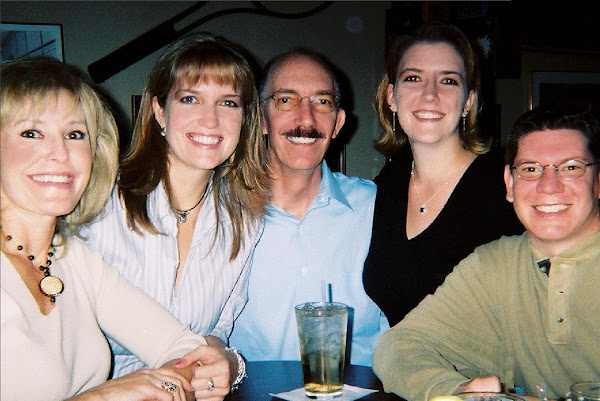Here is a list of twenty-five things about me - in no particular order and of no particular value.
1. When I was younger, it used to bother me that I was so tall. Now, it is what it is.

2. I could watch the movie Airplane! over and over again, continuously.
3. When my right hand was crushed in the Navy and my index finger was nearly severed, my reaction was only mild annoyance.
4. I probably worked too much during the early part of my career. In one two year period, I worked three years. That's too much.
5. I am very happy with how my children turned out, I wish I'd had something to do with it.
6. I wish I had the opportunity to ask family history questions of my parents and grandparents. But that's not going to happen.
 7. I find genealogical research to be like what Hal was referring to in 2001 A Space Odyssey when he said, "I am putting myself to the fullest possible use which is all I think that any conscious entity can hope to do."
7. I find genealogical research to be like what Hal was referring to in 2001 A Space Odyssey when he said, "I am putting myself to the fullest possible use which is all I think that any conscious entity can hope to do."8. I hate it when I have no one to blame but myself.
9. Writing in this blog is surprisingly satisfying.
10. My cursive writing was so bad when I was young that I have been printing everything I've written my whole life.

11. I am not Mr. Spock.
12. My taste in music has been evolving. I seem to enjoy things of a more mellow nature now. For heaven's sake, what's up with that?
13. Alcohol is a gift that I find difficult to refuse.
14. I know enough about Microsoft Windows and the tools necessary to support it to be an effective systems administrator. What do normal people do when their home computer goes all 'Windows' on them?
 15. I have had many, many different jobs in my life but I've been with my current company for 31 years.
15. I have had many, many different jobs in my life but I've been with my current company for 31 years.16. I really like glazed doughnuts.
17. I have a vision for Maryland genealogy where everyone's family history connects to everyone elses in a single metadatabase. I have the same vision for all the Kleyleins in the world.
18. I have very vivid dreams and sometimes I can remember them in great detail.
19. My favorite color is blue.
20. I have been walking since I was eight months old.
21. I have been to almost every state in the United States.
 22. Simon and Garfunkel were right when they said, "A man hears what he wants to hear and disregards the rest."
22. Simon and Garfunkel were right when they said, "A man hears what he wants to hear and disregards the rest."23. If I had actually kept a 'Journal of Unexpected Results', I would be on volume three hundred by now.
24. I once won a Caribbean vacation just by dropping my name in one of those 'Win a Prize' boxes at an appliance store.
25. I have learned that you never know what will happen next.
Bonus: I have been sending out a 'QUOTE OF THE DAY' for twelve years. Today's quote was:
"It's never too late to have a happy childhood."
- Burke Breathed, Bloom County





































